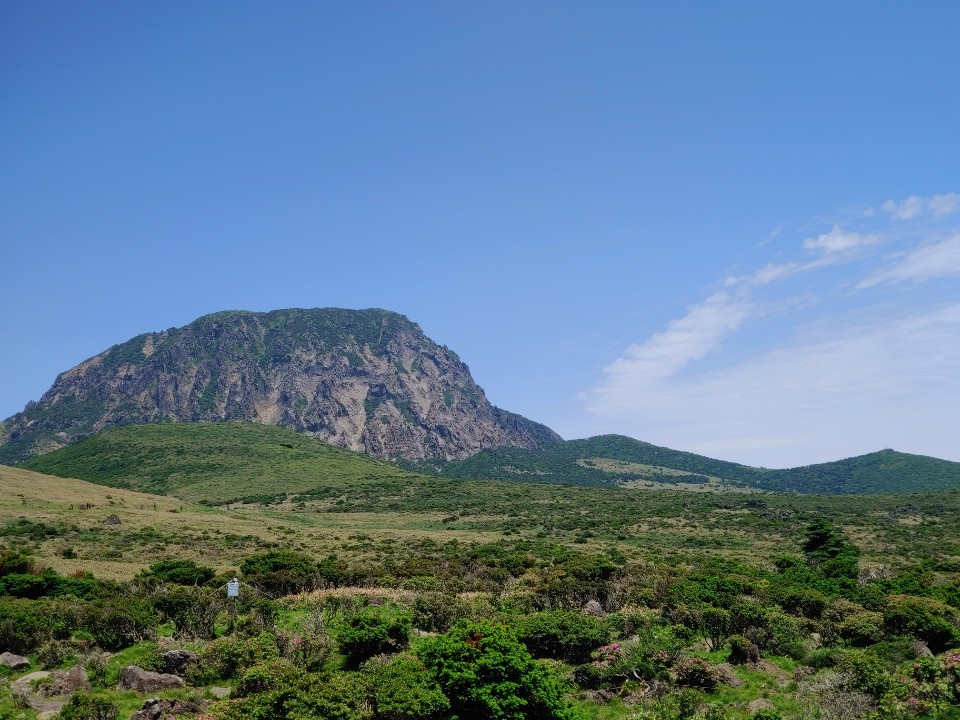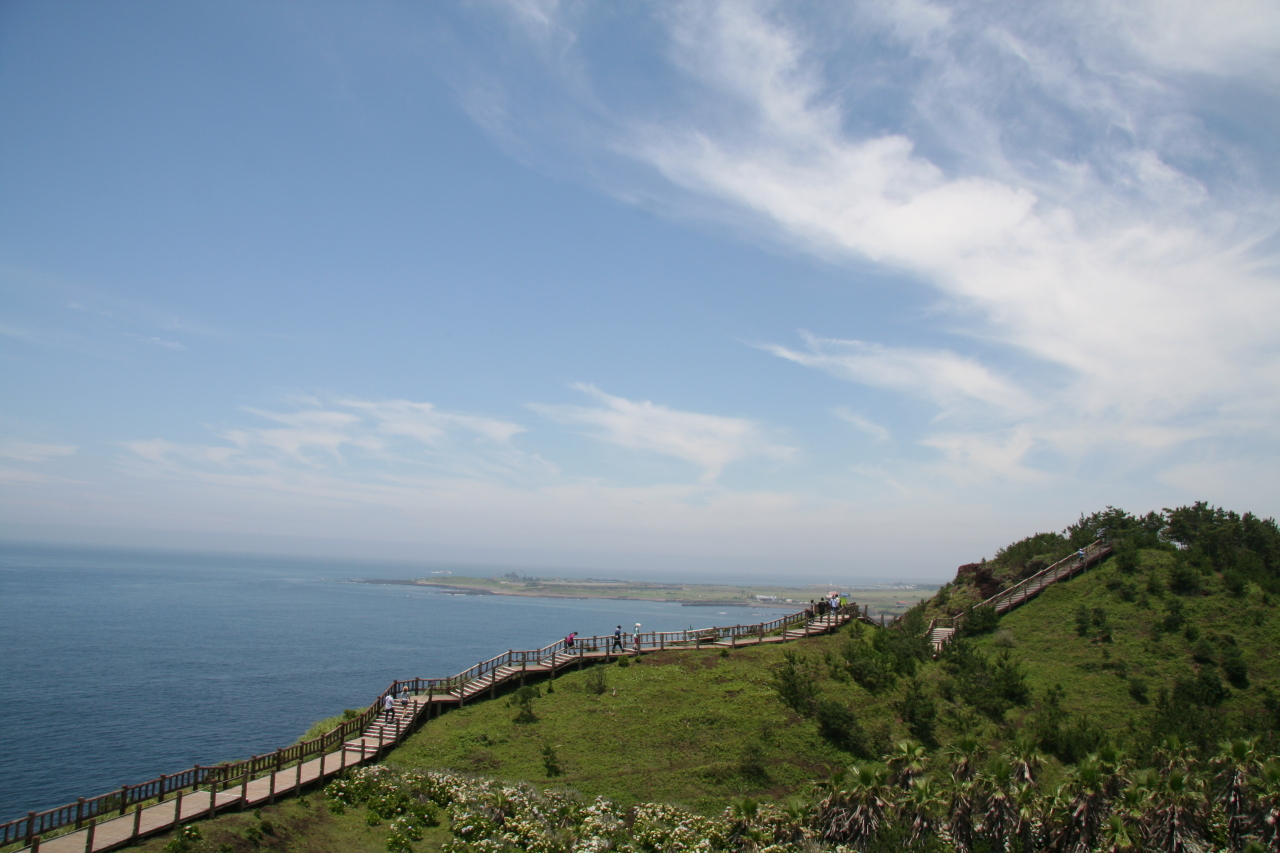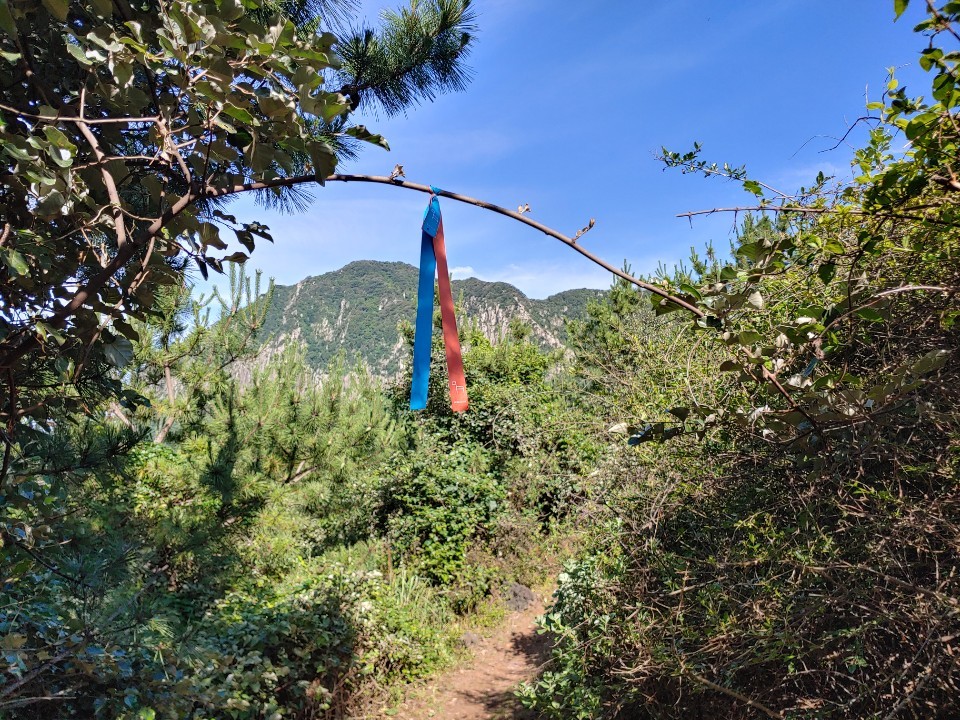Wide open nature of Jeju offers solace for COVID-19 weary
By Kim Hoo-ranPublished : July 17, 2020 - 09:00

Five months into COVID-19, I was itching to go somewhere, anywhere.
The past few months had been filled with anxiety as I worried about family members in different countries. When we were finally all united in Seoul, the house got too crowded, as we mostly kept to home, other than returning to work. I needed to self-isolate in a quiet place -- undisturbed by anyone.
Travel abroad was out of the question. So were crowded tourist destinations.
That left me with an escape to Jeju Island, sometimes labeled Korea’s southern resort island, as the most logical choice. The wide open nature meant I would not come into contact with many people. It also meant I could have time to myself, unfettered by family or work obligations.
My only concern is that the monsoon season is forecast to start on the day I arrive on Jeju Island. I consult with friends who live there whether I should cancel the trip and they assure me that the monsoon season on Jeju Island does not mean endless downpour.
Day 1
I take an early flight out of Seoul’s Gimpo International Airport, arriving on Jeju Island about an hour later. To my horror, the flight is fully booked and I find myself sitting rigidly, not taking my mask off and trying not to touch anything. Korean Air has reduced the number of flights to Jeju in response to the coronavirus outbreak, resulting in the packed flights.
By the time I have picked up my rental car and driven myself to the starting point of the Yeongsil Course at the foot of Hallasan, it is nearly noon. The hourlong drive to the start of the Yeongsil Course at the foot of Hallasan National Park is simply breathtaking: The lush green tree branches on either side of the road form a thick canopy through which gentle sunlight breaks through. I roll down the windows to take in the fresh air and am rewarded with the merry chirping of birds. And the number of deer I sighted crossing the road, oblivious to the oncoming car!
Tourist pamphlets describe Yeonsgil Course as an easy 1 1/2-hour hike to Witsaeorum, located to the left of the top of Hallasan. However, the first part of the hike is an arduous climb up what feels like an endless staircase to nowhere. Stopping frequently, I admire the spectacular view of a steep cliff to the right, aptly named “Yeongsil Giam Rocks and Obaegnahan,” for its tall outcroppings that look like 500 generals. Any complaints about climbing under the blazing midday sun with very little cover fade away.
Yes, those stairs do end at one point and a vast plain of shrubbery unfolds before my eyes with the flat top of Hallasan straight ahead of me. I am in awe by the near silence here and the bluest sky I have seen in days.
The climb down is much easier and I visit Jonjaam Hermitage, an old Buddhist temple that dates back to Goryeo period, located near the entrance to the Yeongsil Course. An old friend has recommended the place for its strong “ki,” or energy force. This is where native Jeju people come to get their ki recharged, she said. After four hours on a mountain trail on an empty stomach, I could use some recharging.

Day 2
The weather forecasters are wrong. It is another sunny day, despite an earlier forecast of a week of rain. I set out from the hotel at 8 a.m., driving to a parking lot at Hwasun Golden Sand Beach, the starting point of the Olle Route 10.
The course takes me through a sandy beach as well as a treacherous stretch of rocks before I hit another expanse of beach, the ocean to my left and the massive Sanbangsan to my right.
A cafe with lounge music blaring beckons and I stop by for a cool glass of cucumber-infused sparkling water. The panoramic view of the ocean from One and Only tempts me to tarry a while, but I get going. The Olle app says the course takes five-six hours -- that means at least seven or eight hours for me.
The course is a stunning one, following the southwestern coastline. With the ocean to the left and picturesque mountains and oreum -- smaller volcano outcrop -- to my right, I am light on my feet. I pass through Yongmeori Coast, walk along a geo-trail, which is fenced off, learning from posters that prehistoric human footprints are found here.
Songaksan is the climax of Olle Route 10, the route winding around the steep ocean-side mountain. The view of the deep blue ocean from high up is awe-inspiring and the cool ocean breeze is a welcome relief.
The rest of the route does not impress, taking me through fields of potatoes without an inch of shade in sight. Further on, the course takes detours, taking me to an airstrip once used by the Japanese during World War II.
The route ends in a small town, a rather undramatic conclusion to an otherwise unforgettable day. While the Olle app tells you how to get back to your starting point, I take the easy way out, taking a cab. It has been a long, hot day and my ears are burning.

Day 3
Finally rain. It starts as a light drizzle and, as my friend has recommended, I head to the Seogwipo Forest of Healing. She has assured me that the thick tree canopy would protect me from light rain.
And she is right. I take a course that leads me through thick forest with mossy rocks. I hear the raindrops but I stay surprisingly dry. However, the walk gets a little scary as I am the only one in the vast dark forest and there are no signs posted, just pink ribbons marking the path. After meandering in the increasingly dark forest for what seems like too long, I am only too happy to see the light at the end. The only problem is once I come out of the thicket, I am exposed to the rain full on. My friend was right!
I still have a few hours until my evening flight so I take up the suggestion by another acquaintance to visit Baum, an old KT bunker that was built in 1990 to control the underwater optical cable connecting the Korean Peninsula, Jeju Island and Japan, that has been repurposed to house a café and a museum.
Bunker de Lumieres, the museum, is currently showing media works showcasing paintings by Van Gogh and Gaugin. The immersive multimedia show is mesmerizing, moving art works projected on the walls and the sound of music filling up the space.
I had planned on staying away from visiting museums and indoor attractions, but with the rain, this was a perfect little stop on my way to the airport.
Some tips:
-- If you plan on hitting any of the Olle Routes, get an early start. Jeju sun can be punishing. Make sure to wear a wide brimmed hat and slather yourself with sunblock, to be reapplied every few hours.
-- If you plan on parking your car at Yeongsil Course, get their early and you will be able to park right near the entrance to the course, saving you quite a bit climb.
-- Make sure to bring water and some food with you. Once you start on any of the walking trails, restaurants may be hard to find.
-- For those who prefer walking on flat terrain, I suggest Saryeoni Forest Path. This time of the year, hydrangeas are in full bloom and the Japanese cedar tries that line that dirt path scent the air.
-- While no guided tours are available due to the COVID-19 outbreak, reservations are mandatory to visit Seogwipo Forest of Healing.
-- Traffic around Jeju International Airport gets quite heavy, especially during the evening commute hours. If you need to drop off your rental car, allow ample time before your flight departure.
For more information on Jeju Island, check visitjeju.net/en
By Kim Hoo-ran (khooran@heraldcorp.com)











![[KH Explains] How should Korea adjust its trade defenses against Chinese EVs?](http://res.heraldm.com/phpwas/restmb_idxmake.php?idx=644&simg=/content/image/2024/04/15/20240415050562_0.jpg&u=20240415144419)







